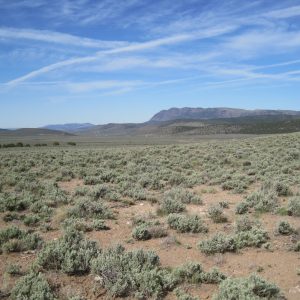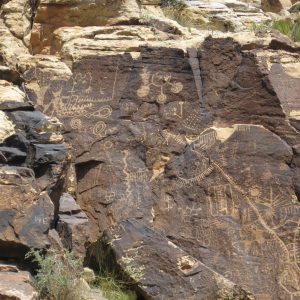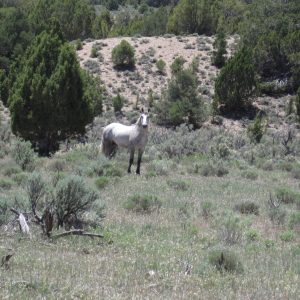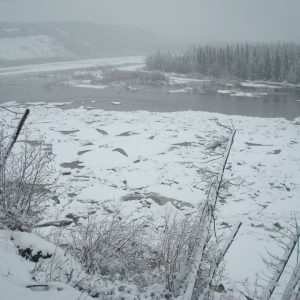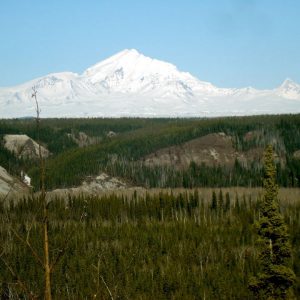Last Monday, I was sitting in the board room of the Surprise Field Office in Cedarville, California. In attendance were members of three separate BLM field offices from northeastern California and western Nevada in addition to members of State Fish and Game, several university extensions, and a handful of NGO’s. The meeting had been called in order to discuss the results of the census of Greater Sage-Grouse which was taken from mid-March through early May across Washoe, Modoc, and Lassen counties in northeastern California and western Nevada.
The data had been collected by an equally diverse group of agencies and volunteers and it painted a pretty clear picture. Counts of sage-grouse leks (grouse breeding grounds) within Washoe, Modoc, and Lassen Counties were down, depending on location, by somewhere between 35-80% from the previous year. Generally, counts taken in marginal habitat and peripheral areas had experienced a decline close to 60-80%, while leks in more productive locations which were closer to core Nevada populations seemed to have seen less of a decline. These were simply rough numbers. No complex data analysis had yet been rendered, though these numbers were startling to me. We know that lek attendance and population fluctuates on an annual basis. But a decline of up to 80% seemed to me a little extreme; especially considering the previous year hadn’t been an atypically dry year, nor could I account for any other glaring reason why there would be such a sharp decline over the course of twelve months.
Having worked with Sage Grouse before, in some of the more productive habitat in the country, this realization came somewhat as a surprise. I knew that grouse had been declining across their range over the past century and a half, but in Rich County, Utah, it was difficult to tell. Since I’ve been in Modoc County I feel like I have been able to see the decline first hand, almost as if it was happening before my eyes. Within the Alturas Field Office we have three primary lek complexes on BLM land. One of these sites, despite costly and extensive restoration projects, has not produced an active lek in three seasons. At another of our primary lek complexes we were unable to locate any birds this season, for the first time ever. The last of these sites, I had a high count for the season of seven birds total (three males and four hens) in an area which is perhaps as peripheral as any; a small sage island surrounded by national forest. All of this makes me wonder, how long will it be before the birds are unable to sustain themselves in northeastern California?
A day after the meeting in Cedarville I was out in the field at one of the lek complex locations; Hayden Hill, a sage island surrounded by juniper and pine forest in the foothills of the eastern Cascades. Within the area, there are close to a dozen points which are indicated as being historic or inactive lek sites. I was just wandering around mulling things over, truthing the sites, looking for signs of sage-grouse use. Mt. Lassen and Shasta were clearly visible to the west shining brilliantly and snowcapped in the midday sun. While I was out wandering around I stopped to chat with a local rancher who was moving his cattle from his ranch to his grazing allotment. He introduced himself as Jerry, a fourth generation rancher in Lassen County. I told him who I was and what I was up to. Jerry, as many throughout the region, was quick to tell me his opinion of ‘sage chickens.’ “Back when I was young,” he said, “sage chickens used to be everywhere. Sure do see quite a few less now-a-days.” Jerry expressed his belief that the lack of predator control, specifically of coyotes, was the main factor which has contributed to the demise of the grouse. Jerry has lived in these hills a long time, his observations are keen, and shouldn’t be discounted. Though, no such simple or straightforward explanation can account for the complex ecological, economic, and ethical factors which are at stake in the decline of Sage Grouse or any other perceived environmental crisis.
Sage grouse is a touchy subject throughout the Great and Wyoming Basins. Conversations which I have had with biologists, environmentalists, energy developers, and lay people on the subject often reflect these conflicting worldviews. The story of the decline of sage grouse parallels a thousand other stories of habitat fragmentation, the loss of species, environmental toxins, rampant development and so on, painting the picture of an environmental crisis; a perceived crisis which seems to exist on many different levels and in many different ways. Underlying this story are the varying interests of people and the cultures they make up throughout the west. All of this makes me wonder; if there is a crisis, perhaps it stems from our lack of ability to account for the varying and often opposing worldviews and value systems with which they are associated and their application to land management and beyond. We seem to lack a working model, and in some case the desire to work towards developing a working model, through which to integrate and understand these various perspectives of stakeholders.
If the goal is indeed to manage land for multiple uses, how do we as an agency function on these multiple levels? How do we account for various value systems and their priorities? Is it even possible to effectively operate as a federal agency while still doing what is ecologically, economically, and ethically correct?
Phil Krening – BLM Alturas, CA

